Содержание книги Prosthetic Dentistry: textbook / M.M. Rozhko, V.P. Nespriadko, I.V. Paliichuk et al.
AUTHORS’ NOTE
INTRODUCTION
HISTORY AND DEVELOPMENT OF PROSTHETIC DENTISTRY
Мodule 1. CLINICAL BIOMECHANICS OF THE HUMAN MASTICATORY APPARATUS
ONTOGENESIS OF THE PRIMORDIAL MASTICATORY APPARATUS
ONTOGENESIS OF THE SECONDARY MASTICATORY APPARATUS
Mandible and maxilla development
Neonatal oral cavity
Mechanisms and timing of tooth eruption
The mandible
The maxilla
The hard palate
The temporo-mandibular joint
Muscles of the masticatory apparatus
Muscles elevating the MANDIBLE (MASTICATION group)
Muscles PROTRUDING the MANDIBLE (MASTICATION group)
MuscleS DEPRESSING the MANDIBLE (suprahyoid group)
Muscles of facial expression
Questions for self-control
Morphology of teeth
The structure of dental arches
Occlusal curves
Bite. Types of bite
Articulation and occlusion
Types of occlusion
Sagittal and transverse occlusal curves
Chewing and swallowing mechanism and muscles providing these functions
Functionally oriented groups of teeth
The oral cavity as a resonator for the pronunciation of words.
Role of teeth and tongue in the process of clear pronunciation
Periodontium. Parodontium. Structure and functions
Oral mucosa and its role in prosthetic treatment
Masticatory reflexes
Sagittal, vertical and transverse mandibular movements and muscles performing them
Questions for self-control
EXAMINATION OF PATIENT IN THE DENTAL PROSTHETIC CLINIC
Clinical methods of examination
Visual examination of the patient and examination of the face
Examination of the temporomandibular joints and masticatory muscles
Examination of facial bones and regional lymph nodes
Determining the tooth mobility
Questions for self-control
Odontoparodontogram according to V.Yu. Kurliandskyi
Detection of premature teeth contacts with occlusiogram
Examination of the occlusion state with T-scan III device
Questions for self-control
SPECIAL (ADDITIONAL) EXAMINATION METHODS
X-ray examination methods
Examination and assessment of anatomical and topographic conditions for implantation
Instrumental methods
Methods for determining the masticatory efficiency
Graphic methods for recording mandibular movements and the functional state of the masticatory muscles
Questions for self-control
Electromyographic examination of the masticatory and facial muscles
FUNCTIONAL DIAGNOSTIC METHODS
Laser flowmetry
Method for examining the fixed one-piece porcelain fused to metal dentures applying DIAGNOdent device
Apexlocation, galvanometry
Questions for self-control
Clinical tests in prosthetic dentistry
Diagnostic laboratory methods
Diagnosis of denture-related stomatitis
Questions for self-control
Diagnostic process in prosthetic dentistry
Plan and tasks of prosthetic treatment
Medical history
Questions for self-control
LOCAL ANESTHESIA IN THE CLINICAL PROSTHETIC DENTISTRY
Indications and contraindications to local anesthesia in the clinical prosthetic dentistry
Collection of anamnesis and examination of the patient before anesthesia and subsequent prosthetic intervention
Questions for self-control
Drugs for local anesthesia
Anesthetics for the application anesthesia
Anesthetics for the injection anesthesia
Local anesthetics of the amide group
Pharmacokinetic characteristics of local anesthetics
Modern physiological mechanisms of local anesthetics effect
Premedication
Questions for self-control
Anesthesia techniques
Maxillary conduction anesthesia
Mandibular conduction anesthesia
Questions for self-control
Local complications associated with the injectable anesthetics
Questions for self-control
General complications associated with local anesthesia
Questions for self-control
Allergic reactions
Questions for self-control
MEDICAL TACTICS AND SURGICAL TECHNIQUES WHEN PREPARING TEETH FOR ARTIFICIAL CROWNS
TECHNIQUES FOR IMPRESSION TAKING
Taking an alginate complete anatomical impression
Taking a double impression
Taking a double one-step impression
Taking a partial double occlusal impression
Taking unloading functional impression
Taking compressive functional impression
PROSTHETIC TREATMENT FOR TOOTH CROWN DEFECTS
WITH ARTIFICIAL CROWNS
Indications and contraindications to the use of artificial crowns
Evolution in technological improvement of crown manufacturing
Questions for self-control
Stamped full metal crowns
Plastic crowns
Portion crowns
Three-quarter crown
Equator crowns
Telescopic crowns
Questions for self-control
Full cast crowns
Metal-plastic crowns
Porcelain fused to metal crowns
Metal-free zirconia crowns
Veneers
Questions for self-control
RESTORING THE PARTIAL DEFECTS OF DENTITIONS WITH BRIDGES
Bridge constructions
Biomechanics of bridges
Indications and contraindications to prosthetic treatment for dentition defects with bridges
Selection of abutment teeth for bridges
The basic principles of bridges design
Questions for self-control
Clinical and laboratory stages of soldered bridges manufacturing
Prosthetic treatment for dentition defects with full cast bridges
Metal-plastic bridges
Prosthetic treatment for dentition defects with porcelain fused to metal bridges
Adhesive bridges
Questions for self-control
Removable bridges with supportive-retentive clasps
Split-cast fixed bridges
Clinical evaluation of bridges
Errors and complications which may occur when applying bridges
Questions for self-control
FIXATION OF NON-REMOVABLE PROSTHETIC CONSTRUCTIONS OF DENTURES
TECHNIQUE OF CUTTING AND REMOVING THE PROSTHETIC CONSTRUCTIONS
Мodule 2. RESTORATION OF DENTITION INTEGRITY WITH REMOVABLE CONSTRUCTIONS OF DENTURES IN CASE OF PARTIAL DEFECTS
CONSTRUCTIONS OF REMOVABLE LAMINAR DENTURES
Denture base
Artificial teeth
Fixation of partial removable laminar dentures
Anatomical retention
Mechanical means of fixing dentures
Lock (articulated) attachments
Attaching the clasp to the denture
Selection of abutment teeth for clasp fixation
Questions for self-control
Technique for designing artificial dentitions
Questions for self-control
RESTORATION OF DENTITIONS WITH CLASP DENTURES IN CASE OF THEIR DEFECTS
Indications and contraindications to the use of the clasp dentures
Fixation and stabilization of the clasp dentures
Clasp system for fixing the arch denture
Bar system for fixing the clasp denture
Manufacturing the clasp dentures with attachments. Types and classification of attachments
Planning the design of the clasp dentures
Diagnostic, working and auxiliary models
Parallelometry, methods of conducting
Questions for self-control
Technology of manufacturing the soldered clasp dentures
Technology of manufacturing the full-cast frame with taking the wax reproduction from the model
Technology of manufacturing the full-cast clasp dentures on refractory models
Manufacturing the refractory model
Modeling the clasp denture frame
Adjustment, fixation and correction of the clasp dentures
Questions for self-control
Мodule 3. CLINICAL PRESENTATION AND PROSTHETIC TREATMENT FOR EDENTULOUS PATIENTS
EXAMINATION OF PATIENT WITH COMPLETE ABSENCE OF TEETH
Clinical presentation of complete absence of teeth
Classification of jaw atrophy
Assessment of the state of the prosthetic bed mucosa
SPECIAL PREPARATION OF THE ORAL CAVITY BEFORE PROSTHETIC TREATMENT
Questions for self-control
FIXATION, STABILIZATION AND EQUILIBRIUM OF COMPLETE REMOVABLE LAMINAR DENTURES
FUNCTIONAL IMPRESSIONS AND THEIR CLASSIFICATION
Custom trays
Techniques for taking functional impressions
Fitting the custom tray on the edentulous mandible
Fitting the custom tray on the edentulous maxilla
Techniques for taking the compression impressions
EVALUATION AND FIXATION OF THE CENTRIC RELATION OF EDENTULOUS JAWS
Anatomical and physiological method for determining the interalveolar height
DEVICES REPRODUCING MANDIBULAR MOVEMENTS
Occluders
Articulators
Individual recording of the mandibular movements
Extraoral method for recording the mandibular movements
Katts–Efron–Gelfand phenomenon
Questions for self-control
ANATOMICAL DESIGN OF DENTITIONS ON GLASS
Anatomical construction of dentitions in progenic and prognathic jaw relation
Articulation theories and their practical significance for the construction of artificial dentitions for complete removable dentures
Questions for self-control
Evaluation of the complete removable dentures
Final modeling the wax bases for removable dentures
Mounting the models, ways of plastic packing in dental flasks. Polymerization modes
Treatment of removable dentures after polymerization
Questions for self-control
FIXATION OF COMPLETE REMOVABLE DENTURES. CORRECTION, ADAPTATION PROCESSES
Agents for fixing removable dentures
Response of the prosthetic bed tissues to removable dentures
Features of repeated prosthetic treatment for patients with complete removable dentures
Questions for self-control
Мodule 4. PARODONTAL DISEASES
PROSTHETIC TREATMENT FOR PARODONTAL DISEASES
Classification of parodontal diseases
Gingivitis
Types of splinting and classification of splints
Splints for the anterior group of teeth
Splinting teeth with system of guywire dentures
Adhesive technology when splinting the movable teeth
Splints for the masticatory group of teeth
Removable splints
Single splint for the dentition
The role and place of prosthetic treatment in the comprehensive therapy for parodontal diseases
Questions for self-control
PROSTHETIC TREATMENT FOR PATHOLOGICAL ATTRITION OF THE HARD DENTAL TISSUES
Etiology and pathogenesis of pathological attrition of the hard dental tissues
Classification of pathological attrition of teeth
Prosthetic treatment for pathological attrition of the hard dental tissues
Questions for self-control
PARTIAL LOSS OF TEETH COMPLICATED BY DENTITION DEFORMATION
Etiology, pathogenesis of partial loss of teeth complicated by dentition deformation
Classification of partial tooth loss complicated by dentitions deformation
Preparation and prosthetic treatment in case of partial tooth loss complicated by dentition deformation
Questions for self-control
TEMPOROMANDIBULAR JOINT DISORDERS
Pain syndrome in case of the temporomandibular joint dysfunction
Arthritis, arthrosis. Etiology, pathogenesis, clinical presentation
Mandible dislocation and subluxation
Methods of treatment for the temporomandibular joint disorders
Questions for self-control
Мodule 5. MAXILLOFACIAL PROSTHETICS
PROSTHETIC TREATMENT FOR PATIENTS WITH DENTOFACIAL DEFECTS
History of maxillofacial prosthetics development
Maxillofacial injuries
Classification of jaw fractures
The mechanism of fragments displacement in case of fractures
Emergency care in maxillofacial injuries
Questions for self-control
Classification of splints and devices used in maxillofacial prosthetics
Bite, crown and ring dental splints
Dentogingival and gingival splints
Transport splints
Questions for self-control
Fractures of the maxillary alveolar process and the mandibular alveolar part
Maxillary fractures
Prosthetic treatment for mandibular fractures
Prosthetic treatment in case of neglected fractures with persistently displaced fragments and bone defects
Improperly consolidated mandibular fractures
False joints
Jaw contracture
Microstomia
Questions for self-control
Postoperative defects of the maxillofacial area
Prosthetic treatment after maxillary resection
Prosthetic treatment after mandibular resection
Prosthetic treatment for facial defects
Prosthetic methods in comprehensive treatment of patients with congenital and acquired palatal defects
Prosthetic treatment for congenital palatal defects
Methods of prosthetic treatment for acquired palatal defects
Prosthetic treatment for patients with soft palate defects
Therapeutic maxillofacial gymnastics
Questions for self-control
PROSTHETIC TREATMENT WITH IMPLANTS
Historical review on the implant dentistry development
Features of clinical examination of patients when planning dental implant surgery
Planning the prosthetic treatment with implants
Diagnostic models, wax and 3d-modeling
Materials for implants manufacturing
Implant components
Classification of implants
Abutments, their types and use
Custom tray manufacturing in prosthetic treatment with implants
Methods of impression taking in prosthetic treatment with implants
Taking impressions according to the open tray technique for manufacturing prosthetic constructions fixed on implants
Clinical and laboratory stages of implant-supported bridge manufacturing
Clinical and laboratory stages of manufacturing a complete removable
laminar bar-supported denture
Questions for self-control
TESTS
KEY
REFENCES

 01054, г. Киев, ул.
01054, г. Киев, ул.
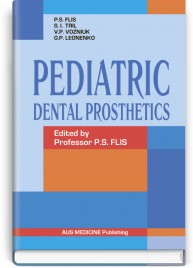



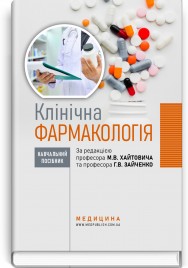
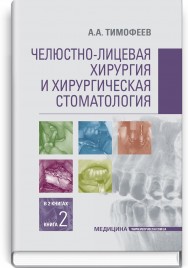

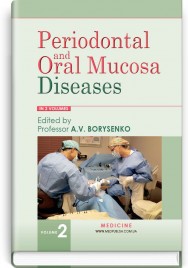



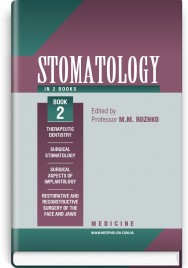
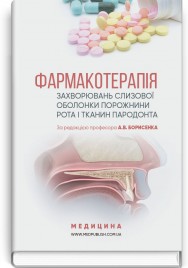





 Архив содержит книги, которых нет в наличии, но которые в ближайшее время, возможно,
Архив содержит книги, которых нет в наличии, но которые в ближайшее время, возможно,